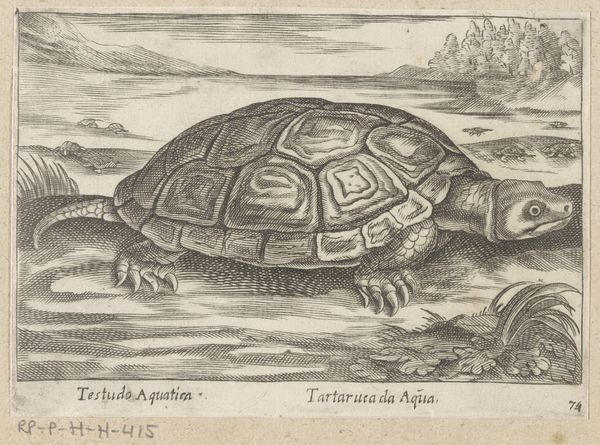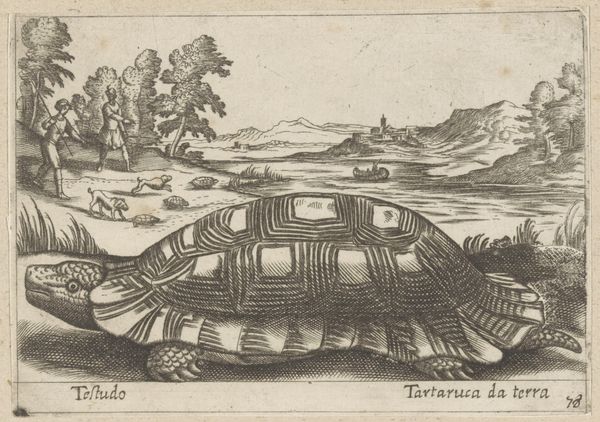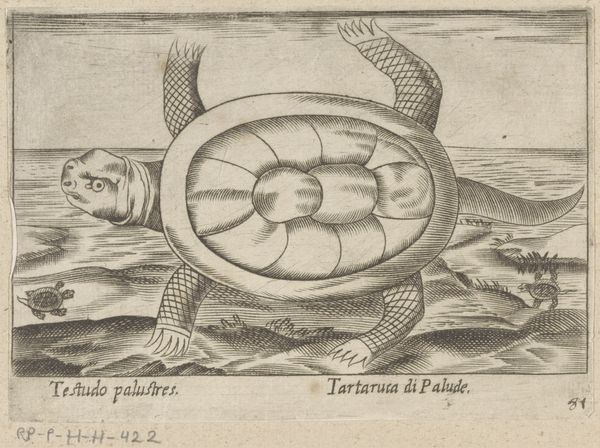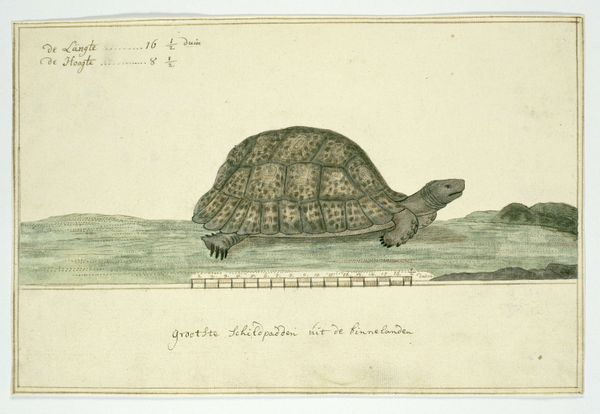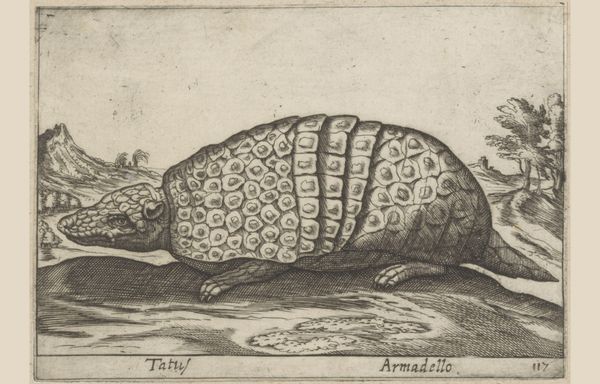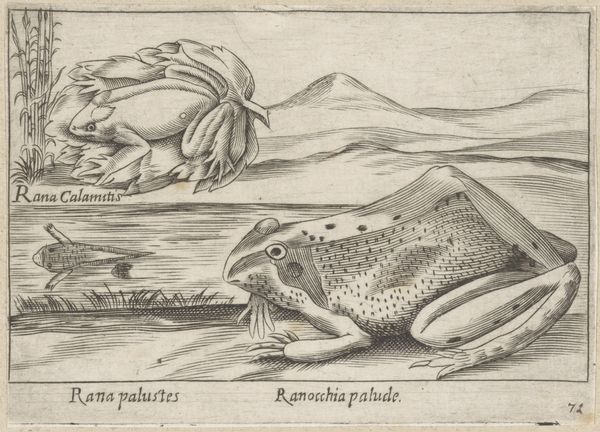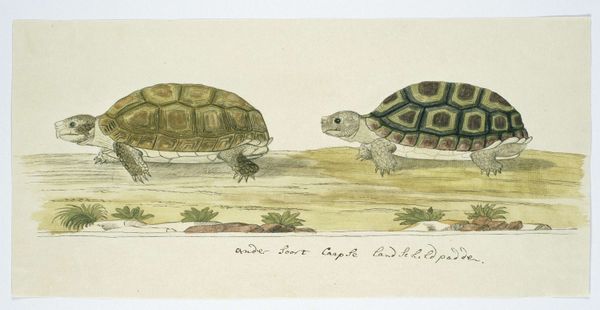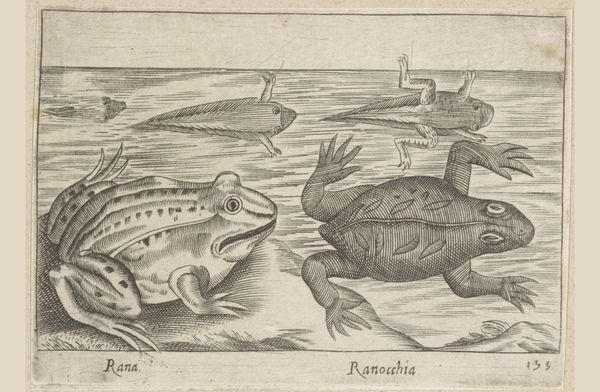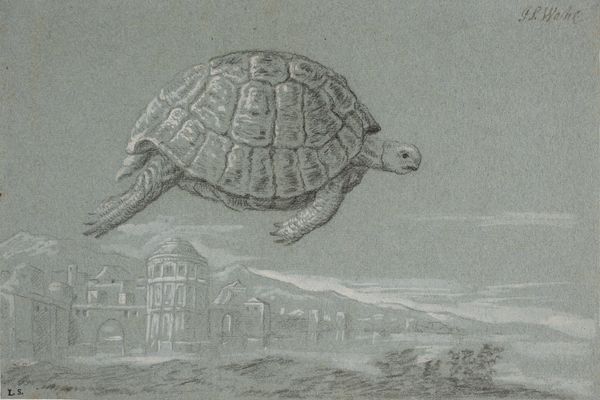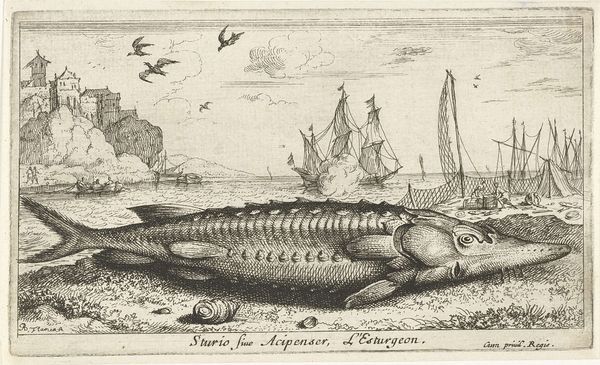
print, etching
#
baroque
#
animal
# print
#
etching
#
figuration
#
vanitas
#
line
Dimensions: height 98 mm, width 155 mm
Copyright: Rijks Museum: Open Domain
Curator: Andries Stock's "Skelet van een schildpad," or "Skeleton of a Turtle," an etching dating from 1625-1626, currently held at the Rijksmuseum. It's a remarkable depiction. Editor: That is... grim. I’m immediately struck by the contrast – the robust, patterned shell and the stark skull protruding. There’s something deeply unsettling about that juxtaposition. Curator: Yes, the shell is incredibly detailed, and even beautiful. I would argue this image plays with potent symbolism and the transient nature of life; the "Vanitas" theme is hard to miss. The turtle shell would be a natural symbol of shelter, structure, and resilience but it becomes an empty vestige of past vitality when seen with skeletal remains. It highlights how our protective shells are useless against mortality. Editor: And it does so using, it seems, meticulous work with lines—the etching allowing a lot of subtle texture in the depiction of the shell itself. The act of labor is clearly important; the printmaking itself becomes a metaphor. The creation is literally embedded into mass produced, accessible image. What social forces are behind a choice in this rendering of subject and object? Curator: Good eye to catch those parallel aspects of the artistic work and the conceptual undertones. Consider how depictions of animals have represented diverse meanings cross-culturally from deities, symbols of character, and vehicles that connect humanity to other realms. A piece such as this leverages cultural association. By contrasting our expectations with the harsh realities it can reveal the complex relations that are also imbedded in art’s consumption. Editor: Yes. Even the texture of the landscape and the minimal vegetation visible add a material dimension. Stock brings the outdoors inside in this image; he gives presence to that life, then robs it of it. We see labor reflected both in the making and in its depicted object. The symbolic message merges with the tactile production, turning toward us...as though toward mortality. Curator: Precisely, our reflection with our own inevitable mortality is provoked. Editor: It certainly succeeds.
Comments
No comments
Be the first to comment and join the conversation on the ultimate creative platform.
